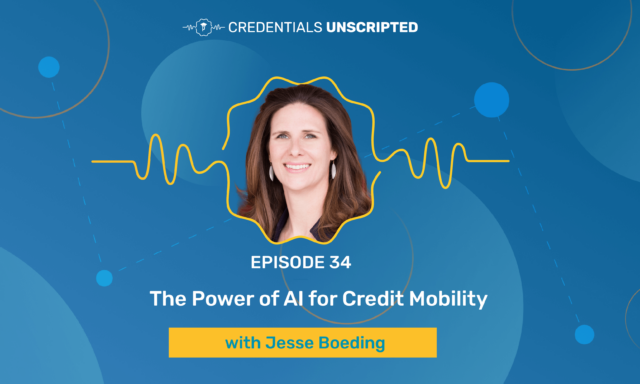
Higher Ed
The Power of AI for Credit Mobility
We use cookies to help you navigate efficiently and perform certain functions. You will find detailed information about all cookies under each consent category below.
The cookies that are categorized as "Necessary" are stored on your browser as they are essential for enabling the basic functionalities of the site. ...
Necessary cookies are required to enable the basic features of this site, such as providing secure log-in or adjusting your consent preferences. These cookies do not store any personally identifiable data.
Functional cookies help perform certain functionalities like sharing the content of the website on social media platforms, collecting feedback, and other third-party features.
Analytical cookies are used to understand how visitors interact with the website. These cookies help provide information on metrics such as the number of visitors, bounce rate, traffic source, etc.
Performance cookies are used to understand and analyze the key performance indexes of the website which helps in delivering a better user experience for the visitors.
Advertisement cookies are used to provide visitors with customized advertisements based on the pages you visited previously and to analyze the effectiveness of the ad campaigns.
Other cookies are those that are being identified and have not been classified into any category as yet.

Unless your idol is Dwight from “The Office,” chances are you don’t want to get stuck in a dead-end job for the rest of your life. Millennials are the same way, and that’s one of the reasons they have a job-hopping reputation. According to Gallup research, the ability to learn and grow is their top priority when searching for a career. Unfortunately, such opportunities are few and far in between (leading to a high turnover rate seen among the 18-35 set).
What can businesses do about this? Give them what they want: career development opportunities being one of the main ways to help combat this turnover. In fact, if you do, you might just see the number of resignation letters decrease and new millennial talent flocking to your company.
What do millennials want?
Well, the answer to that question is a lot longer than we have time for, but in terms of career development, they prefer solid programs with clear outcomes. If a millennial enrolls in your company’s development program, what will they learn? How will they learn it? How will it help them advance their career? How will others be able to verify it? Knowing these answers ahead of time will increase the likelihood that they sign up for your program rather than dismiss it as ineffective from the outset.
Also, one thing to consider is that hands-on applications with real-world consequences are better learning tools than non-interactive videos or presentations for this generation. Often, getting one’s hands dirty is the best and only way to learn something. This is especially true for complicated or multi-step computer applications.
Furthermore, it’s important to make certain that you have a wide variety of development options. After all, your employees have different career goals, even if they happen to work in the same department. At an accounting firm, for instance, one associate may be interested in becoming a manager, while another wants to work on the company’s internal financial team. If you want to keep both, you’ll have to appeal to each of them rather than one over the other.
Once you’ve got your structured, comprehensive development plans in place, you’ll need to provide some sort of verification. After all, you’ll want to keep records of who achieved what, and your employees will want something to attest to all the hard work they did.
This is where digital credentials come in to play.
Even the greatest development program won’t help you retain your employees if they emerge with nothing to show for it. Everyone wants proof of their accomplishments, both for personal satisfaction and to show their achievements to others.
Digital micro-credentials or badges are an easy way to give employees proof of their accomplishments and knowledge. They’re more official than a paper certificate which is easily replicated. Digital credentials meet the modern learner’s expectations of how the world runs.
What’s more, with the right credentialing software, your employees can share their accomplishments on social media. In the professional environment, that means LinkedIn. A verified digital copy of their completed coursework acts similarly to an endorsement from other LinkedIn members, signaling to other professionals that this person knows his or her stuff and that your company is invested in their professional development.
On that note, digital credentials can help you on the employee marketing front, too. If you’re the type of business that promotes its company culture in order to attract new hires, showing potential workers that your company offers a structured path to advancement definitely helps your cause.
Parchment makes it easy to create and offer micro credentials or badges as part of your employee development program. Learn more on our website!
